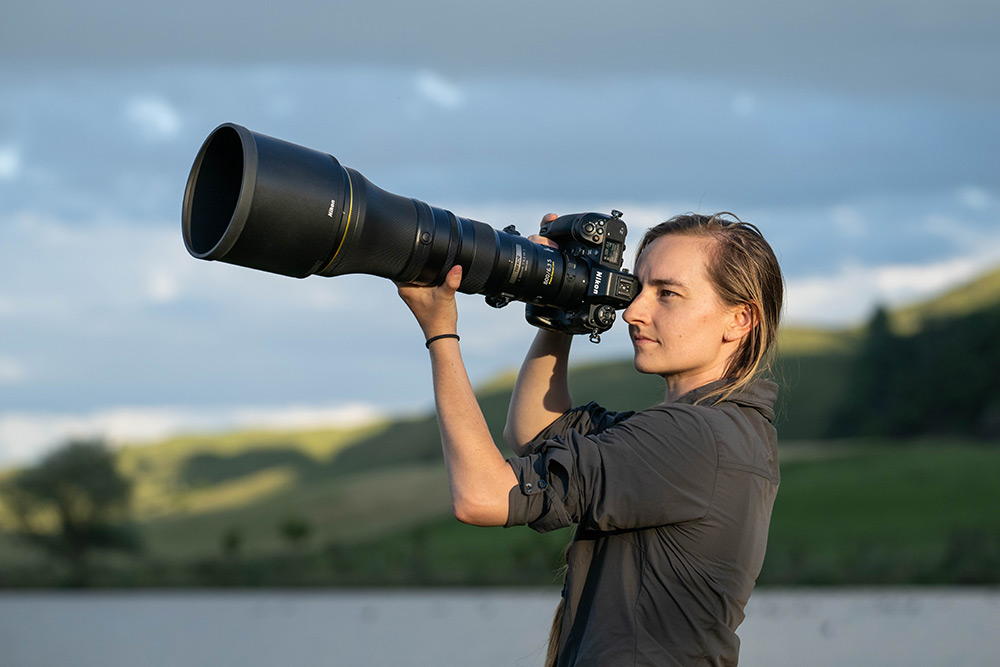- Call us: 01444 237070
- Contact Us
- Stores
- Sign In / Register
-
- Back
- Used Cameras
- Used Accessories
- Used Lenses
- Used Video
- Used Film Equipment
- Used Stock Alert
- Used Blank Test
- Sell or Part Exchange
- Used Clearance
- Recently Added Used Equipment
- Park Picks
- All Used Black Friday Deals
- Faulty
- Trade-In
- Blog
- New in
- Call us
- Contact us
- Stores
- Sign in
- Categories
- Tips & Inspiration
- Reviews
- News
- Events
- Features
- Buying Guides
- Competitions
Nikon Z 800mm F6.3 Lens In Detail
We explore the latest super telephoto prime Nikon Z 800mm lens in detail with full specs, dive into the glossary of terms, discuss features, who it’s aimed at and whether you should get one.
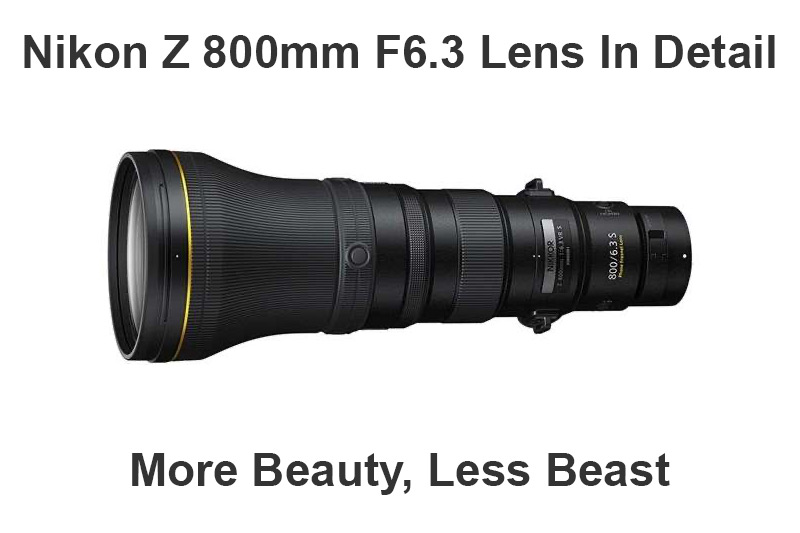
How much is the Nikon Nikkor Z 800mm f/6.3 VR S lens price?
At launch, the new Nikon Z 800mm f/6.3 VR S Lens will be priced at £6,299. This will no doubt surprise – and please potential users. Many expected this lens to arrive with a far higher price tag, more in keeping with other super telephoto prime lenses on the market.
Whilst it’s not cheap by any standard, pricing is far more aggressive than anticipated – just take a look at similar DSLR models, the Nikon AF-S Nikkor 800mm f/5.6E FL ED VR lens or the Nikon AF-S Nikkor 600mm F/4E FL ED VR Lens. It’s true that both of these offer a wider aperture (one and two stops respectively) and the AF-S 800mm has a built-in TC. However you can add a Z 2.0x TC or Z 1.4 TC at under £630 or £579 for this mirrorless model, making it excellent value in comparison. This is great news for professionals and lucky enthusiasts who have been eyeing this prime, since it was announced back in December 2021.
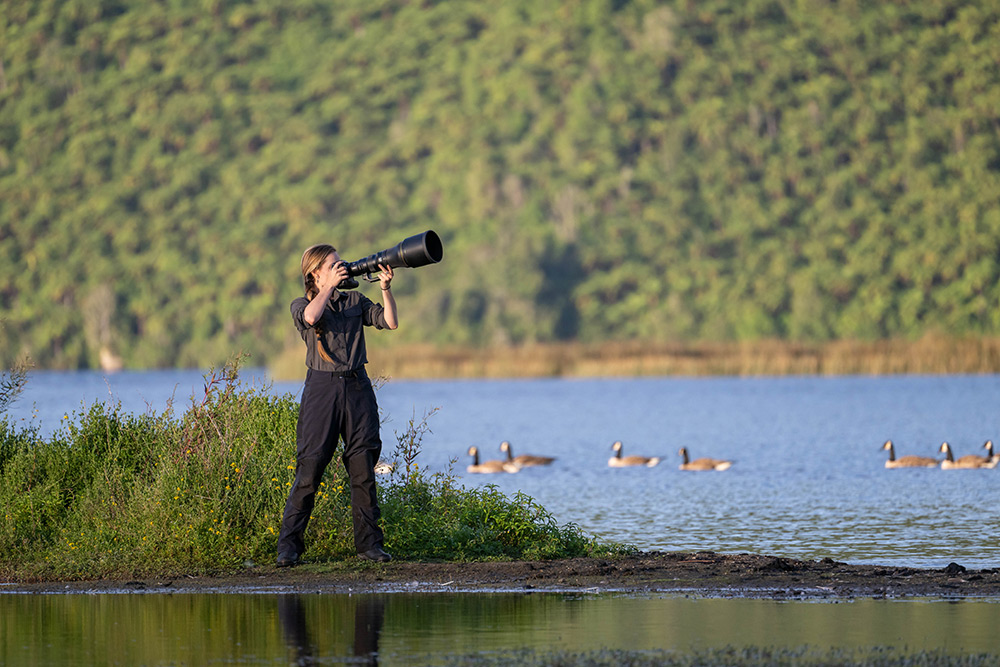
What subjects is the Z 800mm lens good for?
An 800mm prime lens is one of the longest super telephoto lenses which most manufacturers will produce, although there are of course plenty of exceptions. The reasoning behind this is that 800mm gets you so close to your subject and typically takes so much glass – that any longer becomes extremely specialised and is usually extremely heavy.
For those who do need extra focal length we have the option to use teleconverters, which thankfully are designed to work flawlessly with the new super telephoto Z Mount lens. These will get you to 1120mm and 1600mm, which is enough to shoot any earthbound subjects, no matter how distant, as well as stars and planets, before you find yourself moving up to a dedicated astronomy camera and telescope.
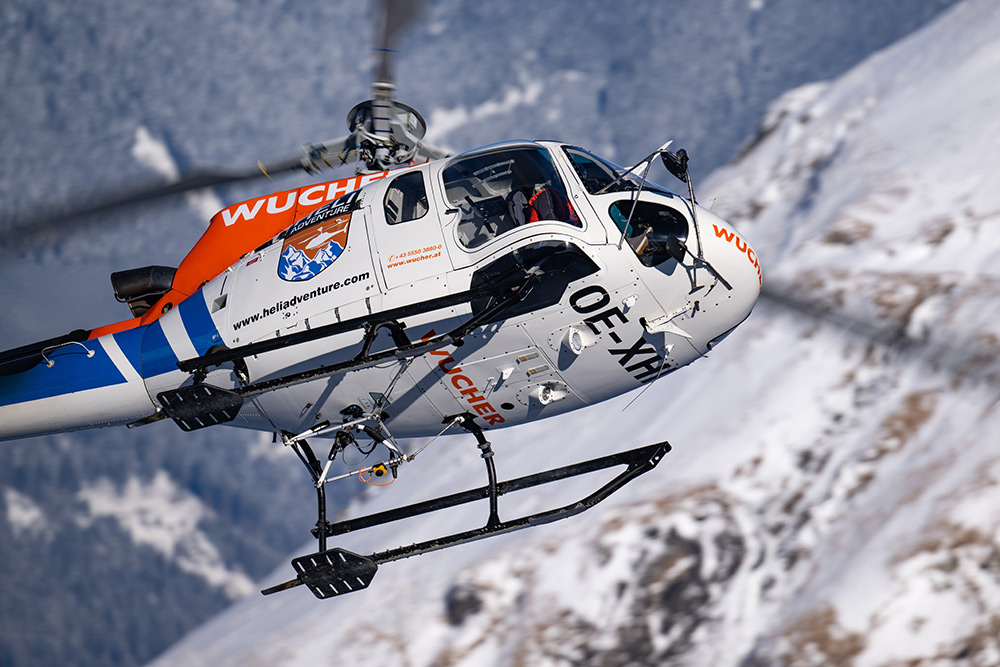
So we have a prime with a comparatively fast aperture and a huge focal width, what’s it for then and which subjects is it good for? We can see this being used by both professional photographers as well as advanced enthusiasts who shoot subjects including:
- Sports photography where your subject is distant, such as water sports including surfing and sailing, as well as airborne sports with paragliding, parachuting and so on. You can also use this for field sports to get right into the action capturing football, cricket and rugby. You may also see a few of these during the Olympics and track events as well as other athletics generally. Obviously if the action heads in your direction you’ll have to reach for a second body with a shorter / zoom lens, but 800mm offers great reach for the other end of the field.
- Wildlife photography where your subject is further away, including bird photography, safaris and any other more distant nature, shooting subjects which are hard to get close to.
- Vehicle photography of all types, from motorsports, bikes and cars as well as for trains, airshows / aviation and boating events etc.
- Paparazzi will no doubt find a use for a super tele such as this in particular situations where their subject is a good way off.
This gives us an idea of a whole host of potential uses for an 800mm of this type. Although a prime will never be as versatile as a zoom lens, results will be extremely high and Nikon ensured it will see plenty of time in the hand thanks to its compact size and weight, which we explore next.
Just before we do move on, it’s worth mentioning the next telephoto in line for the mirrorless Z Mount, which is the Z 400mm F/2.8 TC VR S Super Telephoto Prime Lens With Built In 1.4x Extender. This offers a brighter aperture as well as coming with a TC built-in to reach a 600mm maximum focal width. This makes an excellent option to pair together with the new Z 800mm, as does the Z 100-400mm F/4.5-5.6 S, which adds the ability to zoom throughout a classic focal range. We see the newest Z 800mm as complementing these lenses, rather than replacing them, as they serve different focal ranges and cater for subjects at the longest range. Discover everything you need to know in our Ultimate Guide To Nikon Z Super Telephoto Lenses, which compares the six longest options for Z photographers.

Size and weight of the lens
One of the most surprising aspects of this lens after the price, are its physical dimensions. The Z 800mm is extremely compact for an S-Line super telephoto prime of this calibre, measuring 140mm diameter by 385mm long. With a weight of just 2,385g it is eminently possible to handhold the lens, although it wouldn’t hurt to get down to the gym before you do. This may be especially useful when mounted on the beefy Z9 camera carrying extra weight from the built-in grip. Together this pair weigh in at 3725g, which is light for what you get, but will never be referred to as featherweight.
Pairing with Nikon's Z System flagship Z9 camera
Whilst we are on the subject of the elusive Z9, it’s worth noting that this is a pair made for each other. Despite Nikon being a latecomer with their mirrorless system, the Z9 is regarded as one of the most competent flagship mirrorless cameras ever released. Where they were once playing catch-up, the Z9 has now placed Nikon firmly at the forefront of mirrorless technology. Autofocus has been improved and includes deep learning Ai subject recognition – the Z9 will recognise people, animals, birds and vehicles all in the frame at once, which is completely unique to the Z System. Advanced 3D tracking understands what you’re shooting and how it moves, while burst rates are second to none with up to 120 fps with full AF/AE, and no EVF blackout.
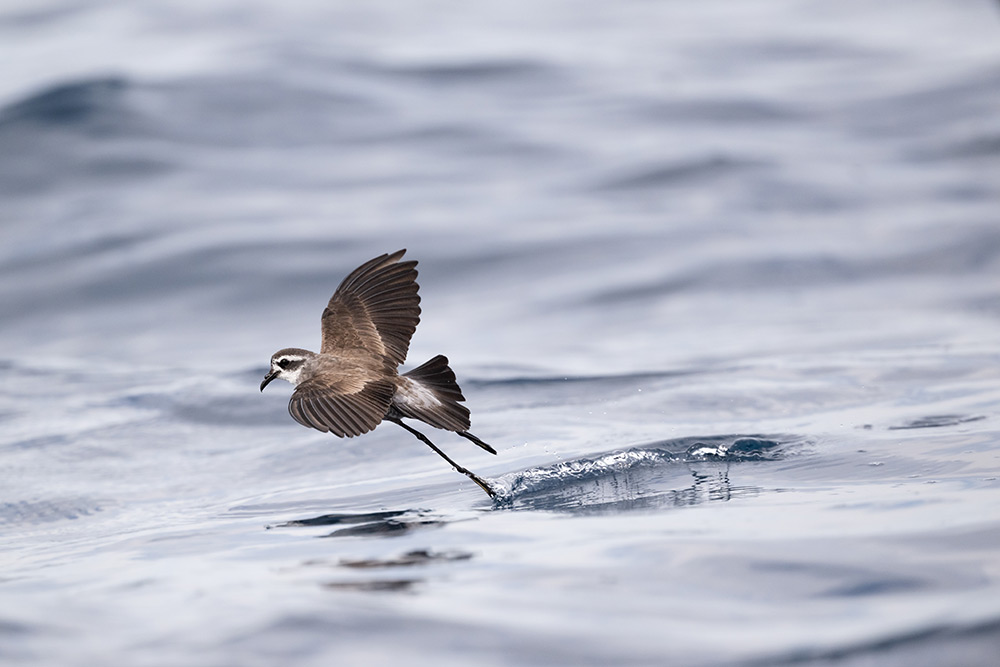
The camera also includes a maximum resolution of a whopping 45.7 megapixels, giving you plenty of latitude for large prints and heavy cropping when required.
Pairing these cutting-edge capabilities with the Z 800mm lens gives you the best systems Nikon has ever developed for capturing distant fast-paced action. The optical VR system in the lens also works seamlessly with the Z9, delivering up to 5.5-stops of combined vibration reduction through Synchro VR with the camera body. Shooting in low light, with a teleconverter and while handholding are all made possible thanks to this combination. This results in more keepers, which is critical for working photographers who have to deliver winners to their editor on a regular basis.
Nikon Z 800mm f/6.3 VR S Lens Specs
See our table with the main specifications for the Z 800mm f/6.3 VR S lens:
|
Mount |
||
|
Lens configuration |
22 elements / 14 groups |
|
|
Focal length FX |
800mm FX format |
|
|
Focal length DX |
1200mm DX format |
|
|
Max. aperture |
f/6.3 |
|
|
Min. aperture |
f/32 |
|
|
Aperture control |
Automatic aperture with electromagnetic diaphragm mechanism |
|
|
9 bladed rounded design |
||
|
Vibration reduction |
VR |
Yes (OFF / NORMAL / SPORT) Switch with camera body |
|
Tripod use |
NORMAL / SPORT recommended |
|
|
Focusing system |
Internal |
|
|
Minimum focus range |
5.0m from focal plane |
|
|
Max. reproduction |
0.16x |
|
|
External dimensions : Diameter x Length (approx.) |
Approx. 140 x 385mm (based on CIPA guidelines) |
|
|
Weight |
Approx. 2385g |
|
|
Filter size |
46mm (slip-in) |
|
|
AF motor |
STM (stepping motor) |
|
Glossary of terms for the Z 800mm f/6.3 VR S Lens
Professional S-Line optical design
Starting at the end with S line, which is basically a badge of honour for select Nikkor Z Lenses, with S-Line achieving a higher level of optical performance with any Nikon mirrorless camera (not just the Z9)!
This means you can achieve excellent results wide open at f/6.3 and the lens resolves superior resolution from even the highest capacity sensors. The Z 800mm is perfect for moviemakers too, who benefit from an easy to operate control ring, with smooth diaphragm control and reduced focus breathing.
Optical VR (Vibration Reduction) up to 5.5-stop
Working back from the S, we have VR or Vibration Reduction. With 5.5-stops when combined with the Z9, you can shoot at slower speeds, in lower light and create artistic effects when panning with your subject to capture motion blur without losing sharpness when desirable.
There was a time when we would take the focal width of a lens and set that number as our minimum shutter speed in order to get a better chance of tack sharp results. In the case of this new super telephoto we’d be shooting at a minimum of 1/800 second. Thankfully those days are long gone, in Nikon’s case since their first VR-capable lens, which came out in 2000, closely followed by the AF-S Micro-Nikkor 105mm f/2.8G IF-ED. There’s some fantastic information with a useful timeline relating to the History of Nikkor Lenses on Nikon’s website, for those who have time for a cuppa and enjoy a read all about Nikon’s most influential lenses.

There are three modes which are set on the camera:
- Off – VR disabled
- Normal mode – Normal mode is recommended for most general purposes, with blur-correction applied to slow and wide camera movement which is regarded as the photographer recomposing their shot. Normal mode also includes automatic panning detection for subjects like vehicles or animals moving across the frame.
- Sport mode – This mode is ideal for subjects which are moving quickly and unpredictably. You’ll notice a more stable image through the viewfinder using Sport mode, when the camera is mounted on a monopod and when shooting handheld. This makes it easier to track erratically moving subjects while panning during high-speed burst shooting.
Nikon recommends using either Normal or Sport modes when using a tripod or monopod with the lens. Speaking of which, we’re still campaigning on your behalf for manufacturers to include Arca-Swiss type feet on their telephoto lenses.
F/6.3 maximum aperture with 9-bladed design
It would have been nice to see f/5.6 on this lens, but the light weight and low price are a welcome alternative to gaining one F-stop. You’ll be thrilled with the results you can achieve at the f/6.3 maximum aperture, especially when the subject has some background separation. Naturally we’ll be seeing plenty of compression with this lens, as well as smooth out of focus areas and rounded bokeh from certain situations. You can shoot wide open and expect razor sharp results, which is testament to the optical formula employed in this model.
Phase Fresnel lens for lower weight
The AF-S Nikkor 300mm f/4E PF ED VR was the first Nikkor lens to employ a PF (Phase Fresnel) lens element, which was the world's lightest 300mm lens at the time and remains extremely popular today. The Phase Fresnel lens used in the Z 800mm delivers the same attributes, keeping the lens lighter, whilst still delivering excellent quality.
Special glass elements for superior results
There are 22 glass elements in total, which are arranged into 14 groups. Amongst these are special lenses, which are responsible for maintaining image quality. In the case of the Z 800mm f/6.3 VR S Lens we have three ED glass, 1 SR and the aforementioned PF lens. Together these render fine detail, reduce chromatic aberrations, minimise colour fringing and capture higher clarity when combined with the Nano Crystal coat. Whether you’re shooting backlit subjects or using artificial lighting you’ll notice excellent results throughout, in keeping with expectations of a lens of this quality. Even minuscule details resolve extremely well when combined with any of Nikon’s highly responsive sensors in their mirrorless camera range.
You can shoot down to a minimum object distance of 5 metres from the sensor with a maximum 0.16x reproduction ratio. This means close-ups are not quite in the realm of tele-macro, but large enough to capture details when you want to – even while handholding.
Electromagnetic Diaphragm Mechanism
The electromagnetic diaphragm mechanism provides highly accurate electronic diaphragm control when using auto exposure during continuous shooting, ideal for photography and videography.
Fast and silent focus with STM (stepping motor)
Lens autofocus motor operation is synchronised with pulse electric power, rotating one step per electric pulse, with excellent responsiveness when starting and stopping. The simplistic design also provides extremely quiet operation, which is useful for video and at times when operational noise from the lens needs to be minimal.
Ergonomics, usability and build quality
Nikon designed this super telephoto model to have a rear-biased centre of gravity, making it easier to use, particularly when handholding. Users can easily pan, move around and stop quickly when following erratic subjects. The internal focusing system maintains size and weight distribution, so it never changes, feeling consistent in the hand and arguably reduces the chance of dust or moisture ingression.
Weather sealing is comprehensive, with seals around all moving parts, including a rubber gasket on the large Z mount opening. As expected we also have a fluorine coat on the front element, making it easier to clean and maintain. Even the HB-104 locking lens hood is notably high quality, with plenty of length to reduce incidental light.
A drop-in 46mm filter holder lets you add lens filters and there are numerous barrel controls to set the lens up according to your own workflow and save time when adjusting shooting settings. These include:
- Four assignable L-Fn buttons
- Silent control ring
- AF/M switch
- Focus limiter
- Memory Set button to save focus distances
Summary
For some it’s hard to justify buying a lens which costs as much as a modest second-hand car, while for others it’s a means to an end. In the case of the Nikkor Z 800mm f/6.3 VR S lens, the end result is incredibly competent performance when acquiring and tracking distant subjects, no matter how fast or erratic they may be.
It is packed with features to shoot quickly and efficiently and promises great results in a wide variety of situations, including for those capturing videos – as many pros are now required to do. Combine this with cameras such as the Z9 and you really have a winning combination for your specialism, whether that be sports, wildlife or any type of action which is further away. It also performs admirably on any other mirrorless camera body, whether FX or DX format.
If you ever need a range boost, simply tack on a teleconverter reaching up to an incredible 1600mm, making this equally suitable for safaris and other once-in a lifetime shoots. Learn more and order your copy of the Nikon Z 800mm f/6.3 VR S Lens here and enjoy capturing your favourite subjects today.
Share this post:
By Nick Dautlich on 06/04/2022
Nick Dautlich
Senior Content Writer and Product Reviewer
Nick Dautlich is the Senior Content Writer and Product Reviewer at Park Cameras, with over 15 years of photography experience. A Sony Imaging Professional and expert reviewer, Nick has worked with major brands such as Canon, Sony and Nikon. His work is also featured on Vanguard World UK’s website, Capture Landscapes, and Shutter Evolve. Nick’s photography includes National Trust projects and magazine covers and he is passionate about landscapes and storytelling. Nick also enjoys hiking and teaching his children about nature. Learn more on his profile page.

Trade in your old equipment
Fast and easy trade in service ensures your old gear is collected efficiently and you are paid quickly! It's very simple to trade in your unwanted photography gear. Just head over to our dedicated Sell or Part Exchange page, fill out the details, and we'll get back to you with an offer for your old gear. Take the cash, or put it towards the cost of your new gear. It's up to you! Find out more
sign up to the newsletter
Keep up to date on the latest photography news, events and offers. Sign up now
